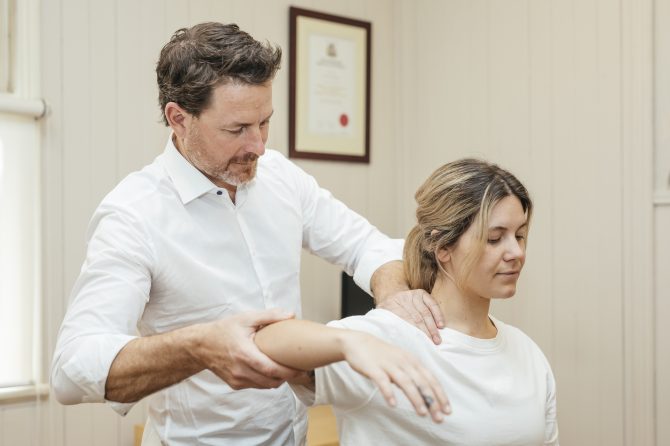THORACIC OUTLET SYNDROME (TOS)
Thoracic Outlet Syndrome (TOS) occurs when there is compression of the nerves, arteries or veins in
the thoracic outlet. This is the space between the collarbone and the first rib. The compression can
lead to symptoms such as pain, numbness, tingling and weakness in the neck, shoulder, arm and
hand.
Common causes of thoracic outlet syndrome can include:
1. Poor posture: Slouching or holding your shoulders in a forward position can compress the
nerves and blood vessels in the thoracic outlet.
2. Trauma: Injuries such as whiplash or repetitive strain injuries from activities like typing can
lead to TOS.
3. Anatomical abnormalities: Some people are born with an extra rib or an abnormality in the
muscles or the alignment in the thoracic outlet, which can predispose them to TOS.
4. Muscles tightness and imbalances: Tight muscles or muscle imbalances in the neck,
shoulders or chest can contribute to compression in the thoracic outlet.
5. Weight lifting/heavy lifting: Activities that involve heavy lifting can out pressure on the
thoracic outlet, especially if proper lifting techniques are not used.
Chiropractic care can be an effective treatment option for sufferers of Thoracic Outlet Syndrome.
Chiropractors focus on restoring good function to the problematic joints and muscles to improve
alignment and relieve pressure on nerves and blood vessels.
Here are some common chiropractic treatments for TOS:
1. Spinal Adjustments: Chiropractors perform spinal adjustments to improve the function of
the neck and upper back, which can help alleviate compression in the thoracic outlet.
2. Soft Tissue Therapy: Chiropractors use techniques such as massage or myofascial release, to
loosen tight muscles and reduce tension in neck, shoulders and chest.
3. Postural exercises: Chiropractors prescribe specific exercises to improve posture and
strengthen the muscles that support the thoracic outlet, helping to prevent compression.
4. Ergonomic modifications: Chiropractors can provide guidance on proper ergonomics for
activities such as sitting at a desk or lifting objects to reduce strain on the thoracic outlet.
It’s essential to consult with a health care professional, such as a chiropractor, for a thorough
evaluation and a personalised treatment plan, if you suspect you may have Thoracic Outlet
Syndrome.
https://www.mychiro.com.my/joint-and-sports-injury/thoracic-outlet-syndrome/
Leave a reply
